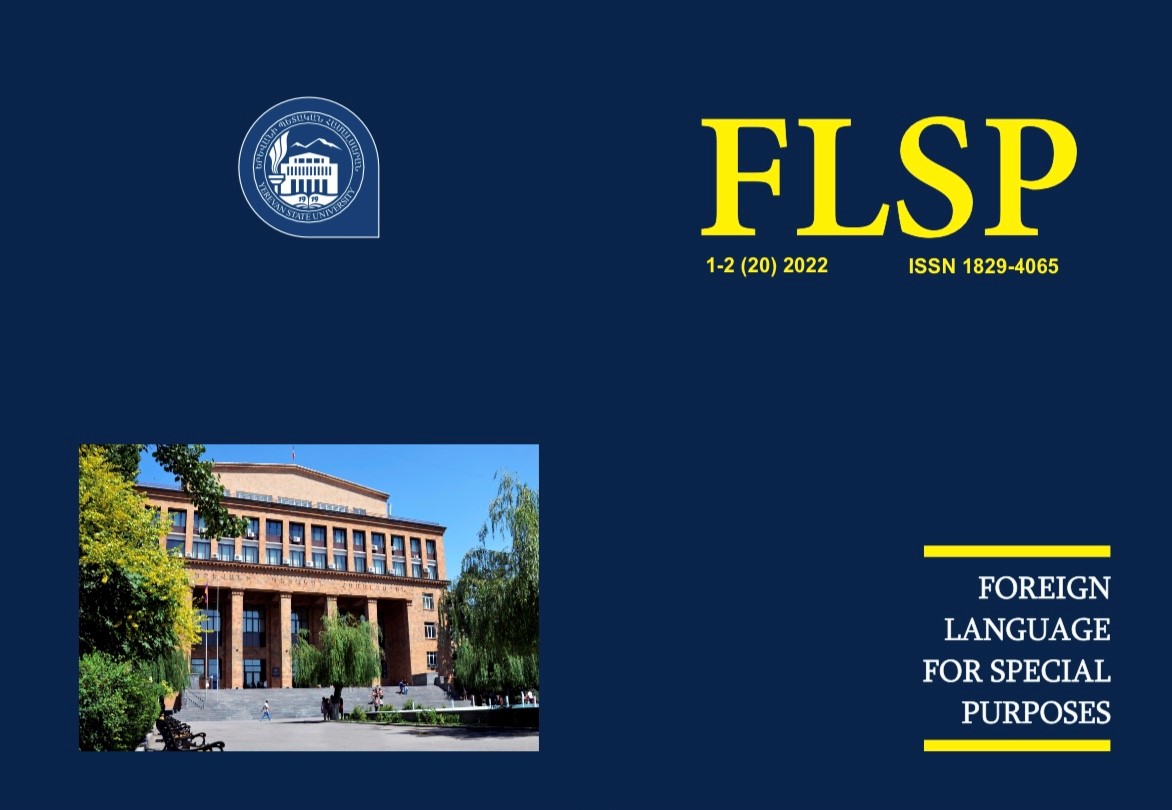ON DEVELOPING READING COMPREHENSION SKILLS IN THE EFL CLASSROOM
DOI:
https://doi.org/10.46991/flsp.v20i1-2.8955Keywords:
neurocognitive research, critical reading, intensive reading assimilate, creative thinkingAbstract
The paper includes intensive and critical reading types as well as is known in the world of increasing information and technological advances reading comprehension and critical thinking skills are of key importance.
The article presents some of reading comprehension methods elaborated on the basis of neurocognitive research, and is aimed at developing and fortifying students’ reading comprehension abilities.
Methods introduced in the article will make the teaching process and the teacher-student collaboration more productive.
References
Costa A.L. and Kallick B. (2000). Discovering and exploring habits of mind. p. 108
Zuniga G. (2001). Constructing literacy from reading in first and second language. p. 73.
Goodman K. (1998) The reading process. Interactive approach to second language reading Cambridge: Cambridge University Press. pp. 11-24.
Halpen D. (2003). Thought and Knowledge an introduction to critical thinking. 4th edition. p. 315.
Duke N.K. and Pearson P.D. (2002). Effective practices for developing reading comprehension. What research has to say about reading instruction. Newark, DE: International Reading Association. pp. 205-242.
Reznitskaya A. and Anderson R.C. (2002). The argument schema and learning to reason. In C.C. Block and M. Pressley (Eds). Comprehension instruction: Research – based best practices. New York: Guilford Press. p. 416.
Mursell J.L. (1951). Using your mind effectively. New York: Mc Graw-Hill p. 58.
Roe B., Smith S.H. and Burns P.C. (2005) Teaching reading in today’s elementary schools. p. 592.
Rochler L. and Duffy G. (1982). Matching direct instruction to reading outcomes. Language Arts 59(5) p. 62-64.
Peterson B. (2001). Literary pathways: Selecting books to support new readers. Portsmouth NH: Heinemann p. 211.
Downloads
Published
Issue
Section
License
Copyright (c) 2022 Foreign Languages for Special Purposes

This work is licensed under a Creative Commons Attribution-NonCommercial 4.0 International License.
Creative Commons Attribution-Non-Commercial (CC BY-NC). CC BY-NC allows users to copy and distribute the article, provided this is not done for commercial purposes. The users may adapt – remix, transform, and build upon the material giving appropriate credit, providing a link to the license. The full details of the license are available at https://creativecommons.org/licenses/by-nc/4.0/

